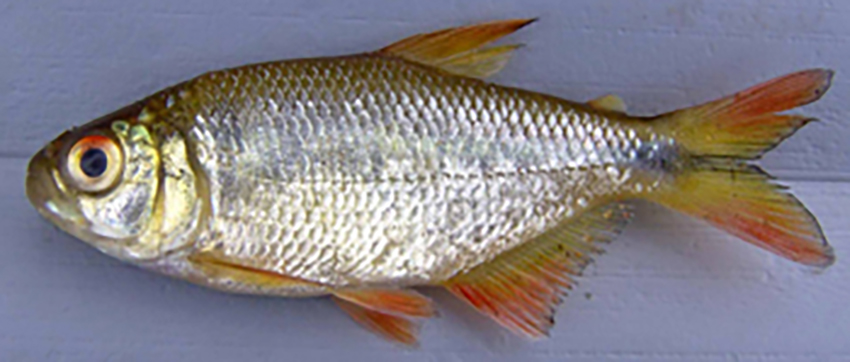new species from Argentina:
Oligosarcus itau Mirande, Aguilera & Azpelicueta, 2011
distribution and habitat (from publication):
Oligosarcus itau is only known from an unnamed stream in the road to Campo Largo, General San Martín, Salta, Argentina; this stream is an affluent of the Río Itau, Río Bermejo basin.
published in:
Mirande, J.M., G. Aguilera & M. Azpelicueta (2011):
A threatened new species of Oligosarcus and its phylogenetic relationships, with comments on Astyanacinus (Teleostei: Characidae).
Zootaxa 2994: 1-20
abstract (from publication):
Oligosarcus itau n. sp. is described. This species is the sister group of the remaining analyzed species of Oligosarcus and this relationship is supported by seven morphological synapomorphies: 1) well developed temporal fossa, 2) absence of a dorsal expansion on the rhinosphenoid, 3) posteroventrally angled articulation between second and third infraorbitals, 4) presence of ectopterygoid teeth on a row, 5) laterally displaced cartilage on the ectopterygoid, 6) presence of bony lamellae bordering laterosensory canal of suprapreopercle, and 7) presence of two pairs of uroneurals. The new species is diagnosed by the following combination of characters: 1) two distinct premaxillary rows of teeth, 2) tricuspidate and pentacuspidate teeth on dentary and posterior premaxillary row, 3) presence of a row of 3–4 tricuspidate to conical ectopterygoid teeth, 4) possession of v-vi,21–23 anal-fin rays, and 5) presence of 41–42 perforated scales on lateral line. Oligosarcus itau n. sp. was previously considered as an Astyanacinus. Astyanacinus moorii (Boulenger), type species of the genus, is included in the Astyanax clade and Astyanacinus platensis Messner is transferred to Oligosarcus.

